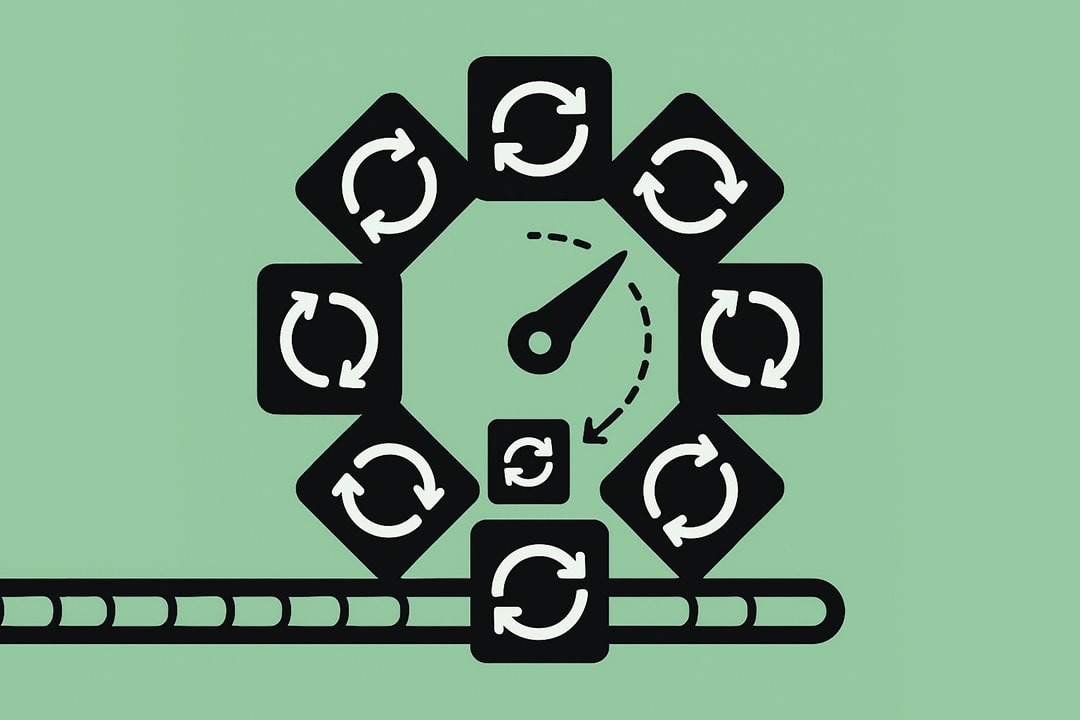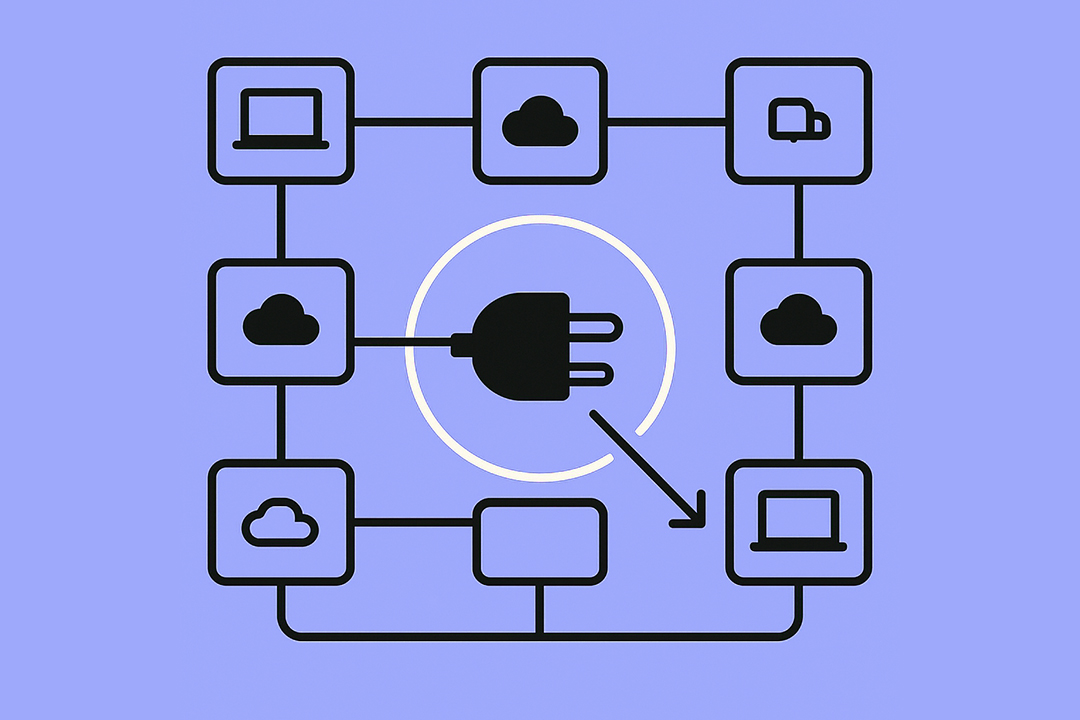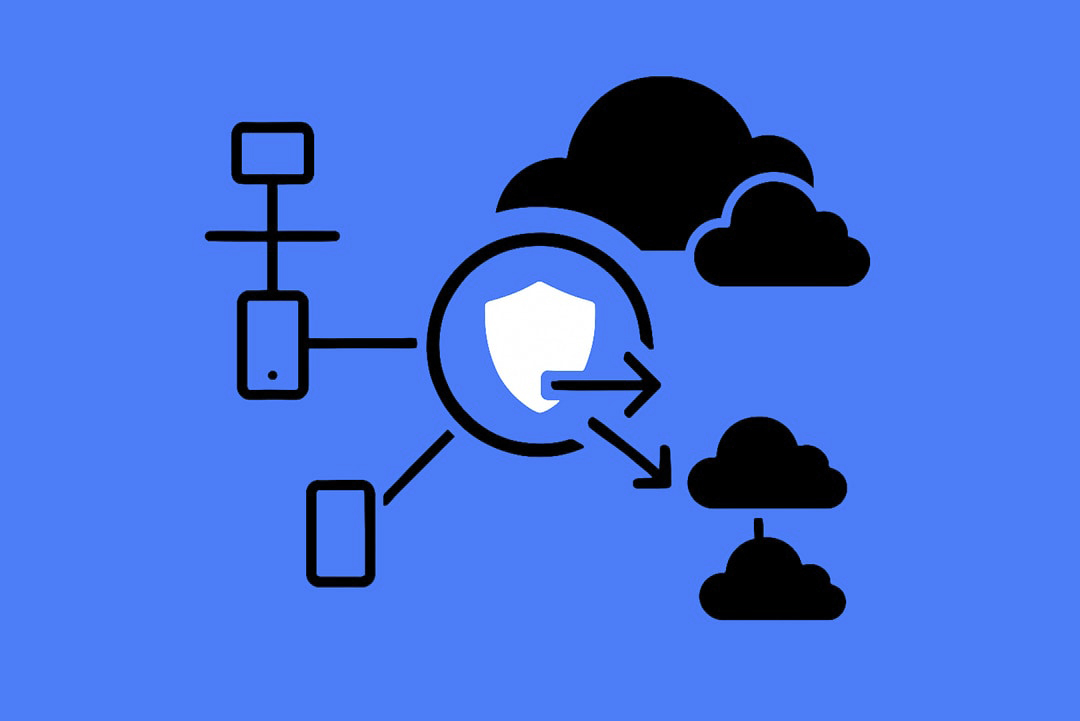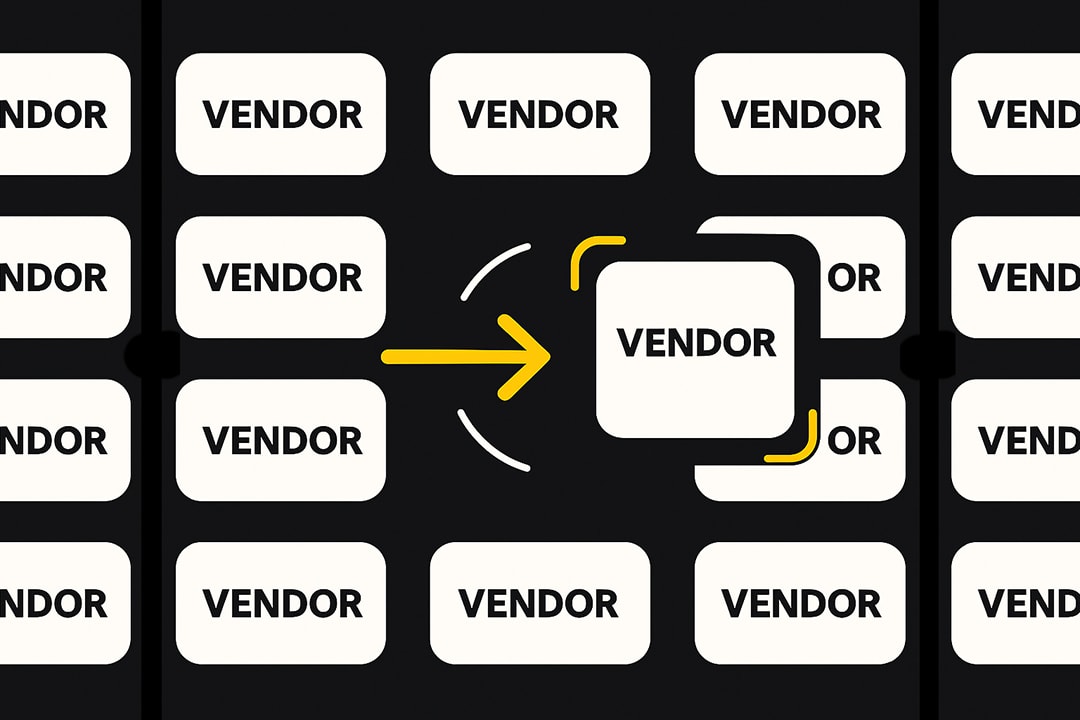A practical guide for vendor management lifecycle
Learn the vendor management lifecycle: seven stages, one data model. Improve vendor selection, reduce risk, and speed renewals with measurable KPIs.

What is vendor management?
Vendor management is how you find, onboard, govern, and grow the partners who power your tech stack. It aligns your business goals with external capabilities through a repeatable vendor management process—so you get value, control risk, and keep spend under control. Done well, vendor management is buyer-first: you set the requirements, define outcomes, and hold vendors accountable to measurable SLAs. It spans discovery and vendor selection, due diligence, contracting, performance reviews, renewals, and offboarding. The goal isn’t more process—it’s fewer surprises and better outcomes.
What is the vendor management lifecycle?
The vendor management lifecycle is the stage-by-stage framework that turns one-off purchases into a system you can run at scale. Think of it as vendor lifecycle management that starts with a clear need and ends with clean offboarding (and lessons learned). In between, you qualify the request, run vendor selection against objective criteria, complete onboarding with the right controls, monitor risk continuously, measure performance against outcomes, and manage contracts and renewals with data—not guesswork. A lifecycle approach gives every stakeholder—IT, security, finance, legal—the same source of truth, so decisions are faster, defensible, and easier to repeat.
Why this matters now
- The market is crowded; time is scarce. A lifecycle makes complexity manageable.
- Risk is continuous. Your lifecycle should be, too.
- Renewals are where value is won or lost. Lifecycle data makes negotiations real.
Why stages matter
A staged approach turns chaotic buying into a system you can run. With a clear vendor management lifecycle, every stakeholder knows what happens next, what data is needed, and who owns the decision. The result: fewer surprises, faster outcomes, and better leverage at renewal.
Here’s what a stage-based model unlocks:
- Speed with clarity: Stage gates make handoffs clean and predictable. You cut rework, shorten cycles, and keep vendor selection moving without last‑minute fire drills.
- Continuous risk control: Risk isn’t a one‑time checklist. Stages embed security, privacy, and legal reviews throughout the vendor management process, so controls stay current as products, data flows, and teams change.
- Negotiation leverage: When performance, usage, and contract terms live in one system, you negotiate with facts. You can right‑size SKUs, align SLAs to reality, and avoid autorenew traps.
- Accountability and auditability: Clear owners at each stage, plus measurable KPIs, create a defensible record of decisions—critical for IT, finance, and security.
- Scale and consistency: Vendor lifecycle management gives you a repeatable playbook you can apply across categories, geos, and business units without reinventing the wheel.
Stages make vendor management simpler to operate and easier to trust. They connect intake, due diligence, onboarding, performance, and renewals into one fabric—so the vendor management lifecycle becomes a strength, not a bottleneck.
Stage 1: Intake and qualification
Stage 1 is where the vendor management process begins. The goal is simple: turn an initial request into a clear, quantified need that the whole team can act on. You capture the business case, map the risk, and route to the right reviewers early—so decisions are faster, cleaner, and easier to defend across the vendor management lifecycle. This shapes vendor management into a repeatable system instead of one-off conversations.
Objectives
- Qualify the need and prevent duplicate tools
- Identify inherent risk and data sensitivity
- Route to Security, Legal, Finance, and IT with the right context
What to capture
- Outcomes and success metrics
- Estimated users/spend, timelines, and integrations
- Data classification and compliance requirements
- Existing vendor alternatives and consolidation options
How it works
- Intake form: Requester submits outcomes, scope, and data profile.
- Triage and routing: Risk tiering triggers the right reviews; low-risk requests flow fast.
- Decision and plan: Go/hold with rationale, owners, and next steps.
Outputs
- Intake decision with initial risk tier
- Shortlist plan and evaluation criteria
- Ownership (business and technical), timeline, and budget guardrails
Best practices
- Use minimum viable evidence by risk tier—avoid over-collection.
- Auto-check against your approved catalog to curb sprawl.
- Generate a structured scorecard now to streamline objective vendor selection later.
- Log assumptions so you can validate them during onboarding and QBRs.
Stage 2: Selection and contracting
Stage 2 moves from interest to commitment. The aim is a defensible vendor selection that maps directly to outcomes, risk posture, and total cost. Treat this as a crisp, criteria‑driven step in your vendor management process, not a series of ad‑hoc demos. Keep stakeholders aligned, document trade‑offs, and make terms measurable from day one.
Objectives
- Choose fit‑for‑purpose options using a transparent scorecard
- Validate minimum security, privacy, and compliance posture
- Lock in terms that mirror how you’ll actually operate and measure
What to capture
- Must‑have vs. nice‑to‑have requirements with weighted criteria
- Integration footprint, data flows, and regulatory scope
- TCO/ROI assumptions, usage baselines, and switching costs
- SLA targets (uptime, response, resolution), credits, and reporting cadence
How it works
- Shortlist and script demos: Evaluate against the same user journeys
- RFI/RFP where needed: Standardize responses for apples‑to‑apples comparisons
- Light POC/Pilot: Prove the critical path, not every edge case
- Due diligence: Security questionnaire, references, and financial health check
- Negotiation prep: Benchmarks, renewal windows, exit rights, and data handling
Outputs
- Selected vendor with documented rationale and scorecard
- Baseline KPIs tied to outcomes, plus risk exceptions (if any)
- Contract with renewal windows, auto renew controls, SLA credits, and DPAs
- Implementation plan with owners, milestones, and reporting
Best practices
- Separate “fit” from “flash”—decide on workflows, not slideware
- Keep requirements lean to avoid over‑spec and vendor lock‑in
- Tie SLAs to metrics you can collect from your tools on day one
- Capture renewal windows now to strengthen leverage later
Stage 3: Onboarding
Stage 3 turns decisions into a safe, working service. This is where the vendor management process sets controls, confirms ownership, and readies your teams to operate. Treat onboarding as a measured step in the vendor management lifecycle, not a rush to go live. The result: fewer surprises, faster time-to-value, and a clean handoff from vendor selection to operations. In strong vendor lifecycle management, onboarding is lean, auditable, and driven by the data you already gathered—no duplicate work.
Objectives
- Establish minimum viable controls by risk tier
- Confirm business and technical ownership with clear escalation paths
- Stand up access, integrations, and reporting aligned to outcomes
What to capture
- Security and privacy evidence (e.g., DPA, SOC 2/ISO, subprocessor list)
- Access and identity model (SSO groups, least privilege, admin boundaries)
- Asset and SKU details (licenses, entitlements, cost centers)
- Integration map (systems touched, data flows, logging/monitoring)
- Support plan and SLAs (hours, response/resolve targets, incident playbook)
How it works
- Checklist by tier: Use risk-based onboarding to avoid over-collection.
- Provisioning: Create groups, roles, and approvals; log all admin access.
- Registrations: Update CMDB/asset inventory; link contracts and owners.
- Controls and exceptions: Document any gaps with compensating controls and expiry dates.
- Go-live review: Validate outcomes, KPIs, and reporting cadence before launch.
Outputs
- Go-live approval with accountable owners named
- Current evidence pack and controls register
- Usage and KPI baselines tied to the business case
- Integration and support runbooks stored where teams can find them
Best practices
- Reuse due-diligence evidence; don’t re-ask what you already have.
- Automate where possible: access setup, CMDB entries, renewal alerts.
- Tie SLAs to metrics you can measure on day one.
- Keep onboarding lean; expand only when risk or scope increases.
Stage 4: Continuous risk and compliance
Stage 4 keeps your risk picture fresh. Controls don’t stop at go‑live; they evolve with the product, your data, and your stack. Make this a repeatable loop inside the vendor management process so security, privacy, legal, and finance stay aligned without slowing the business.
Objectives
- Maintain a current view of security, privacy, financial, and regulatory risk
- Catch material changes early and trigger the right reviews
- Keep exceptions short‑lived and tracked to remediation
What to monitor
- Security posture: attestations, pen test summaries, breach disclosures, subprocessor updates
- Financial health: funding, revenue concentration, credit signals
- Regulatory and data: residency, transfer mechanisms, new laws or frameworks
- Operational signals: incident trends, uptime, ticket backlog, change volume
How it works
- Tiered cadence: critical vendors quarterly; others semiannual or annual
- Evidence reuse: pull from prior assessments and trust portals to cut noise
- Thresholds and alerts: when a score dips or a change lands, trigger review
- Exception governance: expiry dates, owners, and compensating controls
Outputs
- Updated risk score with clear deltas since last review
- Exception log with actions, owners, and due dates
- Recommendations for optimization, additional controls, or exit planning
Best practices
- Right‑size the depth of review by tier; don’t treat all vendors the same
- Automate change detection where possible; keep humans for judgment calls
- Connect risk signals to performance and contracts to create leverage at renewal
- Feed insights back to planning and, if needed, fresh vendor selection
Stage 5: Performance and relationship management
Stage 5 is where value shows up—or doesn’t. Treat it as a disciplined loop inside your vendor management process, not an optional check‑in. You’ll turn contracts into outcomes, keep teams aligned, and build leverage for renewals. Done well, this step connects what you promised during vendor selection to what’s actually delivered across the vendor management lifecycle. It’s the heartbeat of effective vendor lifecycle management.
Objectives
- Prove business outcomes, not just uptime
- Spot risk and value gaps early and act on them
- Build a collaborative rhythm with clear owners and commitments
What to measure
- Reliability: uptime, incident MTTR, support responsiveness
- Adoption and value: active users, feature utilization, outcome KPIs tied to the business case
- Cost efficiency: cost per active user/feature, shelfware, true‑ups avoided
- Sentiment: stakeholder CSAT and executive sponsor feedback
How it works
- Health score: Roll reliability, adoption, cost, and risk into a simple score per engagement
- QBRs: Use a standard deck with trends, credits earned, and a 90‑day plan
- Joint backlog: Track improvements, RCAs, and roadmap asks with clear due dates
- Signals to contracts: When performance lags, trigger SLA credits or renegotiation prep
Outputs
- Health score and QBR decisions: invest, maintain, remediate, or replace
- Action plan with owners, dates, and expected impact
- Evidence pack for audits and renewal negotiations
Best practices
- Measure what you can observe from your tools—then align SLAs to those metrics
- Tie every KPI back to the original business case from vendor selection
- Keep reviews short, regular, and data‑first; escalate exceptions quickly
- Feed performance insights forward to planning and back to earlier stages in the vendor management lifecycle
Stage 6: Contract and renewal management
Stage 6 turns data into decisions. Use the rhythm of renewals to protect leverage and align terms to reality. Make this stage a visible part of your vendor management process so finance, IT, security, and legal can act in time—not after autorenew hits. When Stage 6 is strong, vendor management becomes predictable, and your vendor management lifecycle consistently drives value beyond the initial vendor selection.
Objectives
- Make timely keep/renegotiate/replace decisions with facts
- Align SLAs and pricing to observed performance and usage
- Eliminate auto renew surprises and shelf ware
90/60/30 rhythm
- 90 days: Validate outcomes and usage. Reconfirm the business case. Explore consolidation or alternatives.
- 60 days: Pull benchmarks, review risk deltas, and script negotiation levers (term, SKUs, true‑ups, notice clauses).
- 30 days: Finalize terms, route approvals, and execute comms (renew, amend, or non‑renew).
What to track
- Renewal windows, auto renew clauses, CPI caps, and notice periods
- SLA performance vs. credits earned; incidents and RCAs
- Entitlements vs. actual consumption; seat and SKU rationalization
- TCO trajectory and ROI vs. plan
How it works
- Renewal packet: Auto-assemble usage, health score, contract terms, risk updates, and pricing benchmarks.
- Leverage map: Tie observed performance to SLA adjustments and credits; model options (extend, downsize, multi‑year).
- Decision workflow: Default to “notify/do not auto renew” unless a renewal decision is approved.
Outputs
- Documented decision with rationale (renew, renegotiate, replace)
- Updated contract deltas and obligations; refreshed KPIs and owners
- Savings realized, shelf ware removed, and post‑renewal action plan
Best practices
- Start every renewal with reality: what was promised vs. delivered
- Keep pricing honest with external benchmarks and internal unit economics
- Treat amendments as product changes—update owners, runbooks, and controls
- Feed outcomes back into planning and, if needed, fresh vendor selection
Stage 7: Offboarding and transition
Stage 7 closes the loop. Treat offboarding as a defined step in your vendor management process, not an afterthought. You remove access, collect data deletion certificates, settle obligations, and capture lessons learned—so the next cycle runs smoother. This is disciplined vendor management that reduces residual risk and protects continuity. It keeps vendor lifecycle management compliant, auditable, and easy to run. Most importantly, it completes the vendor management lifecycle with a clean exit and a clear handoff back to planning and future vendor selection.
Objectives
- Eliminate residual risk: access, data, assets, and integrations fully decommissioned
- Preserve continuity: document transitions, backups, and owner changes
- Close financials: credits, final invoices, and true‑ups reconciled
- Capture learning: what to repeat, what to avoid next time
What to capture
- Access teardown: IdP groups, admin roles, support portals, API tokens, SSO/OAuth apps
- Data handling: export/return plan, verified deletion, certificates, escrow releases
- Contract wrap‑up: termination notices, obligations met, service credits applied
- Dependency map: integrations removed, webhooks disabled, IP allowlists cleared
- Documentation: runbooks updated, architecture and CMDB cleaned, ownership changes
How it works
- Plan the exit: timeline, responsibilities, and risks by environment and team
- Execute controls: revoke access, disable integrations, retrieve or wipe assets
- Verify data: receive deletion/return evidence and archive proofs
- Close the books: reconcile invoices, apply credits, and log savings/avoidance
- Retrospective: 30‑minute review to record outcomes and feed improvements upstream
Outputs
- Offboarding checklist completed with evidence links
- Data deletion or return certificate on file
- Financial close report and savings/avoidance summary
- Lessons learned logged and mapped to updates in policies, templates, and scorecards
Best practices
- Default‑deny on auto renew: confirm termination and notice windows early
- Tier by risk: deeper evidence and verification for critical vendors
- Centralize evidence: store certs, notices, and runbooks with the engagement record
- Feed forward: use the retrospective to refine intake questions, evaluation criteria, and SLAs
One data model, seven stages, zero surprises
When you run vendor management as a stage‑based system on one data model, everything gets simpler. Intake flows into selection and onboarding, and renewals are informed by facts. That’s the payoff of a disciplined vendor management process inside a visible vendor management lifecycle.
Keep a single backbone: Vendor, Engagement, Contract, Risk, KPIs, Financials, Assets, People, Artifacts, and Events. This unifies vendor lifecycle management end to end—from vendor selection to offboarding—so decisions are faster and auditable.
Wire the integrations that keep the loop tight: IdP/SSO, HRIS, ITSM/CMDB, monitoring, ERP/AP, CLM, and BI. Track KPIs across the vendor management process: time to first decision, onboarding speed, risk coverage, health trends, savings, and shelf ware removed.
Avoid the traps that erode trust. Don’t over‑collect at intake, model Vendor separate from Engagement, make risk continuous with expiring exceptions, align SLAs to observable data, and capture renewal notices to avoid auto renew. These moves turn vendor lifecycle management into an advantage.
Adopt a phased roadmap, then iterate: stand up the data model, integrate core systems, add clause extraction and benchmarks, and ship executive dashboards. You’ll recognize the flow—assess, select, onboard, monitor, renew or exit—but the difference is a single source of truth. Codify the stages now and let vendor selection through renewal deliver faster value for vendor management.
All is right is if starts right
The first step is usually the hardest. With TechnologyMatch, vendor discovery and selection become streamlined and noise-free, setting up the stage for a clean lifecycle ahead.
FAQ
What is the vendor management lifecycle?
The vendor management lifecycle is a stage-based vendor management process that standardizes how you plan, vet, contract, monitor, renew, and offboard suppliers—so vendor lifecycle management stays repeatable, auditable, and outcome-focused from intake through vendor selection and beyond.
What are the stages of vendor lifecycle management?
Most programs follow seven stages: intake and qualification; selection and contracting (objective vendor selection); onboarding; continuous risk and compliance; performance and relationship management; contract and renewal management; and offboarding and transition.
How do I implement a vendor management process with one data model?
Define core entities (Vendor, Engagement, Contract, Risk, KPIs, Financials, Assets, People, Artifacts, Events), stand up intake and vendor selection first, integrate IdP/SSO, ITSM/CMDB, ERP/AP, CLM, and BI, then add QBRs, health scores, and renewal workflows to mature vendor lifecycle management.
How does a single data model improve renewals and vendor selection?
It unifies usage, performance, risk, and contract terms, letting you benchmark price, align SLAs to observable metrics, trigger credits, prevent tool sprawl at intake, and negotiate renewals with evidence—making vendor selection and renegotiation faster and more defensible.
What KPIs should I track in vendor management?
Track time (intake-to-decision, onboarding speed), risk (assessment currency, exception aging), performance (uptime/MTTR, adoption, health score), financials (savings vs. benchmarks, cost per active user, shelfware), and renewal outcomes (notice compliance, TCO trajectory).





